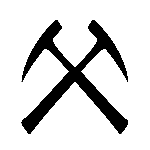9: Draft Textbook
- Page ID
- 10722
\( \newcommand{\vecs}[1]{\overset { \scriptstyle \rightharpoonup} {\mathbf{#1}} } \) \( \newcommand{\vecd}[1]{\overset{-\!-\!\rightharpoonup}{\vphantom{a}\smash {#1}}} \)\(\newcommand{\id}{\mathrm{id}}\) \( \newcommand{\Span}{\mathrm{span}}\) \( \newcommand{\kernel}{\mathrm{null}\,}\) \( \newcommand{\range}{\mathrm{range}\,}\) \( \newcommand{\RealPart}{\mathrm{Re}}\) \( \newcommand{\ImaginaryPart}{\mathrm{Im}}\) \( \newcommand{\Argument}{\mathrm{Arg}}\) \( \newcommand{\norm}[1]{\| #1 \|}\) \( \newcommand{\inner}[2]{\langle #1, #2 \rangle}\) \( \newcommand{\Span}{\mathrm{span}}\) \(\newcommand{\id}{\mathrm{id}}\) \( \newcommand{\Span}{\mathrm{span}}\) \( \newcommand{\kernel}{\mathrm{null}\,}\) \( \newcommand{\range}{\mathrm{range}\,}\) \( \newcommand{\RealPart}{\mathrm{Re}}\) \( \newcommand{\ImaginaryPart}{\mathrm{Im}}\) \( \newcommand{\Argument}{\mathrm{Arg}}\) \( \newcommand{\norm}[1]{\| #1 \|}\) \( \newcommand{\inner}[2]{\langle #1, #2 \rangle}\) \( \newcommand{\Span}{\mathrm{span}}\)\(\newcommand{\AA}{\unicode[.8,0]{x212B}}\)
- 9.3: Sediments and Strata
- Basic principles for sedimentology and stratigraphy, including uniformitarianism, original horizontality, and Walther's Law (2019)
- 9.4: Fluid Flow
- Reynolds number, laminar versus turbulent flow, boundary layer, laminar sublayer, bed shear stress, review of Walther's Law (2017)
- 9.5: Sediment Transport
- Bed shear stress, Bernouli Effect, bedload and suspended sediment, Hjulstrom diagram (2019)
- 9.6: Bedforms
- Stratification, lamination, bedding, bedforms, ripples, dunes, upper planar lamination (2019)
- 9.7: Sedimentary Facies
- An introduction to the concept of sedimentary facies
- 9.10: Glacial Environments
- Glacial environments are defined as those where ice is a major transport process. The high viscosity of ice makes all ice transport of sediment laminar. Thus, grain sizes are not sorted. All of the sediment is transported together, with the ice, and it is deposited when the ice melts. However, liquid water and wind can also transport sediment in these environments. Wind transport is common when there is little vegetation. Liquid water transport occurs when the ice melts.
- 9.11: Rivers
- Sediment transport by rivers, associated depositional environments, and fluvial deposits. Rivers are responsible for most sediment transport from mountains to lowlands and the oceans. They do the most to even out the topography that tectonic processes create. Rivers consist of channel, bank and overbank or floodplain deposits. Most of the sediment and many river characteristics are controlled by the highest common flow speeds.
- 9.12: Marine Deposition
- Sediment transport and sedimentary structures due to waves, storms, and tides.
- 9.14: Interpreting Stratigraphic Columns
- Five steps to analyzing stratigraphic columns
- 9.9: Weathering and Erosion
- The formation of sediment through weathering. Mass transport of sediment.


